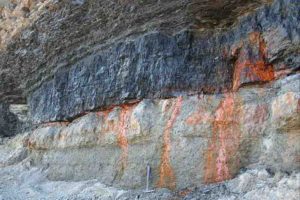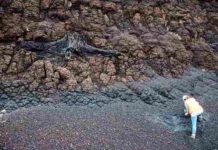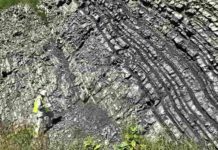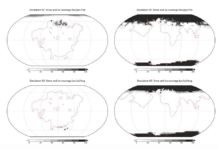
While burning coal today causes Earth to overheat, about 300 million years ago the formation of that same coal brought our planet close to global glaciation. For the first time, scientists show the massive effect in a study to be published in the Proceedings of the US Academy of Sciences. When trees in vast forests died during a time called the Carboniferous and the Permian, the carbon dioxide (CO2) they took up from the atmosphere while growing got buried; the plants’ debris over time formed most of the coal that today is used as fossil fuel. Consequently, the CO2 concentration in the atmosphere sank drastically and Earth cooled down to a degree it narrowly escaped what scientists call a ‘snowball state’.
“It is quite an irony that forming the coal that today is a major factor for dangerous global warming once almost lead to global glaciation,” says author Georg Feulner from the Potsdam Institute for Climate Impact Research. “However, this illustrates the enormous dimension of the coal issue. The amount of CO2 stored in Earth’s coal reserves was once big enough to push our climate out of balance. When released by burning the coal, the CO2 is again destabilizing the Earth system.”
The study examines the sensitivity of the climate in a specific period of Earth’s deep past by using a large ensemble of computer simulations. While some of the changes in temperature at that time can clearly be attributed to how our planet’s axis was tilted and the way it circled the sun, the study reveals the substantial influence of CO2 concentrations. Estimates based on ancient soils and fossil leaves show that they fluctuated widely and at some point sank to about 100 parts CO2 per million parts of all gases in the atmosphere, and possibly even lower. The model simulations now reveal that global glaciation occurs below 40 parts per million.
Burning that same coal dangerously raises greenhouse gas concentration in our atmosphere
Today, CO2 levels in the atmosphere have reached more than 400 parts per million. Carbon dioxide acts as a greenhouse gas: the Sun warms Earth’s surface, but most of the heat radiated by the surface escapes into space; CO2 and other greenhouse gases hinder part of this heat from escaping, hence warming the planet.
“We should definitely keep CO2 levels in the atmosphere below 450 parts per million to keep our climate stable, and ideally much lower than that. Raising the amount of greenhouse gases beyond that limit means pushing ourselves out of the safe operating space of Earth,” says Feulner. “Earth’s past teaches us that periods of rapid warming were often associated with mass extinction events. This shows that a stable climate is something to appreciate and protect.”
Reference:
Georg Feulner. Formation of most of our coal brought Earth close to global glaciation. Proceedings of the National Academy of Sciences, 2017; 201712062 DOI: 10.1073/pnas.1712062114
Note: The above post is reprinted from materials provided by Potsdam Institute for Climate Impact Research (PIK).










